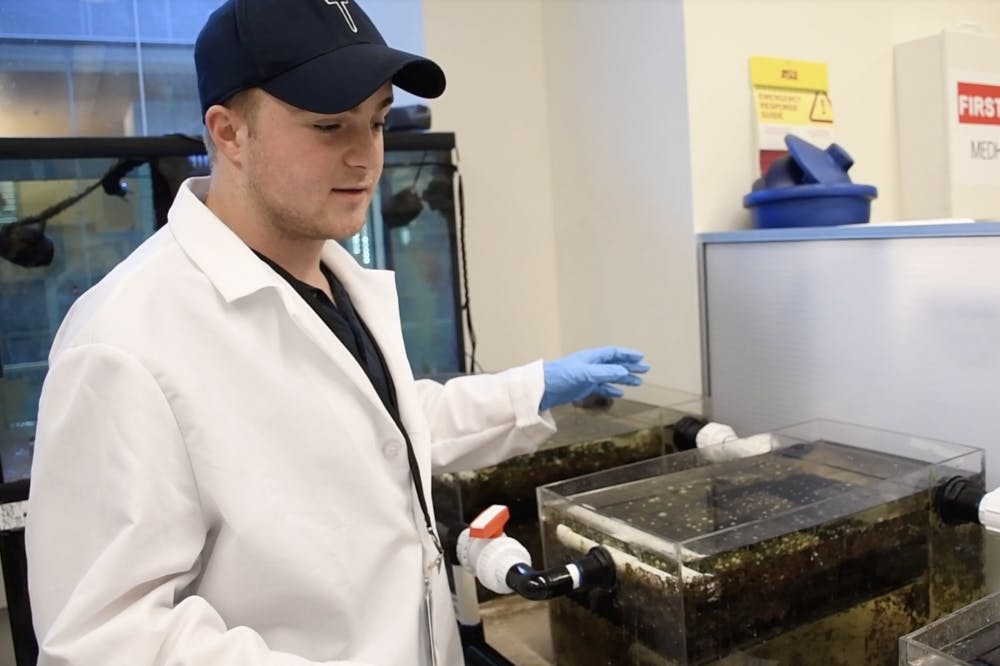ASU was selected as one of thirteen institutes nationwide for a cancer cell study. Dr. Carlo Maley, director of the study, and his team speak about what they are doing to advance humanities knowledge of cancer.
Music: Chill Underground Hip Hop Beat by D-Low Beats
Payton Watts: [00:00:08] Arizona State was selected as one of 13 exclusive institutes nationwide for a cancer cell study. I caught up with Dr. Carlo Maley to see what it was all about. [00:00:17][8.9]
Dr. Carlo Maley: [00:00:20] At ASU our day to day work, we have lab work in here, we have, mostly we're doing computational analysis of the genetics of tumor. And also analysis of the database of veterinary records. We're trying to understand how cancer appears across all different animals and why some animals are more or less receptive to cancer.
Payton Watts: [00:00:41] Cancer is spread across various walks of life. One of the main organisms Dr. Maley and his team chose was the sea sponge.
Erik Southard: [00:00:50] In tank one and two we have the untreated sponges. So right now we're just trying to make, I mean, for a model organism we need as many as we can possibly get. So my job during the day is feed them, make sure that they're cloning and growing and that there's not any predators in here. Right now we're dealing with these little mollusks that happen to like to eat off the sponges. As you see I've been removing those. And then once these are big enough and there's enough plated on one little foam pad, we take two out at a time, one for the control and then one for the treatment. The control will sit next to the radiation and then the other one will get the treatment. And here we have the ones that have been treated. We see that when they get treated with x-rays they like to contract. And then after a little while the spindles will come back out and they regrow. So once that happens we'll be able to look at them under the microscope, see if we can notice any changes.
Dr. Carlo Maley: [00:02:05] It will be a discovery one way or the other. Either we'll say "look nobody was looked at before but indeed they do get cancer and is what it looks like" or "hey actually these things aren't getting cancer and there's some interesting new biology we discover around why they're not getting cancer" and the hope is when we learn about that like we did in the elephants to just ask how to translate that into improving human health. That is how to prevent cancer in humans based on how nature has done in these other organs.
Reach the reporter at pwatts1@asu.edu or follow @wattscpeyton on Twitter.
Like State Press on Facebook and follow @statepress on Twitter.




